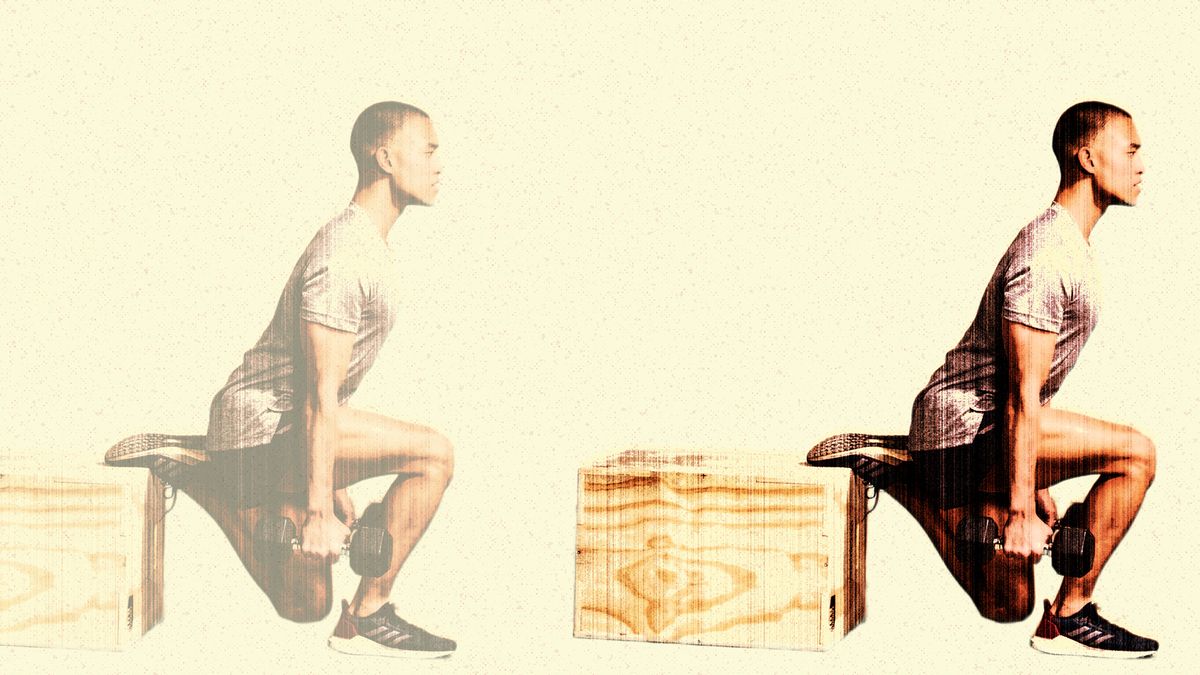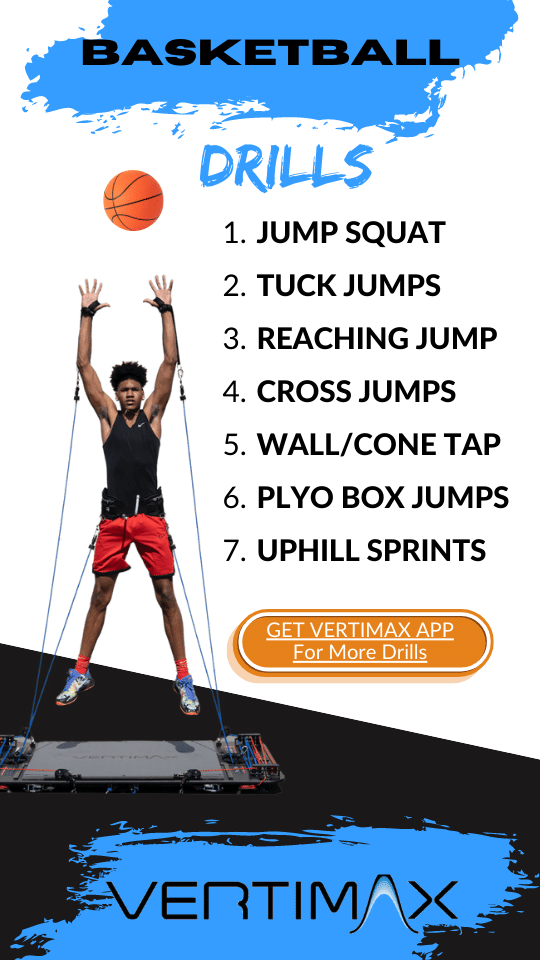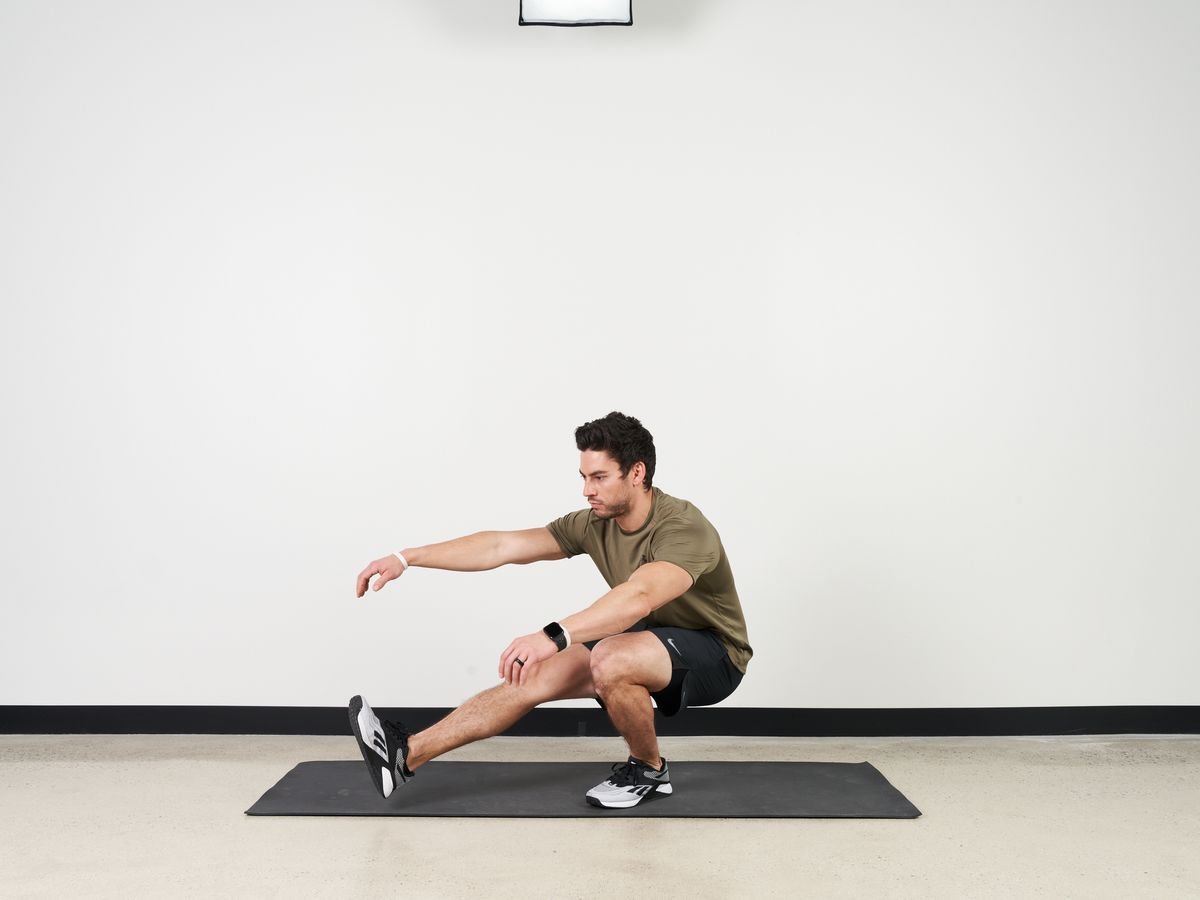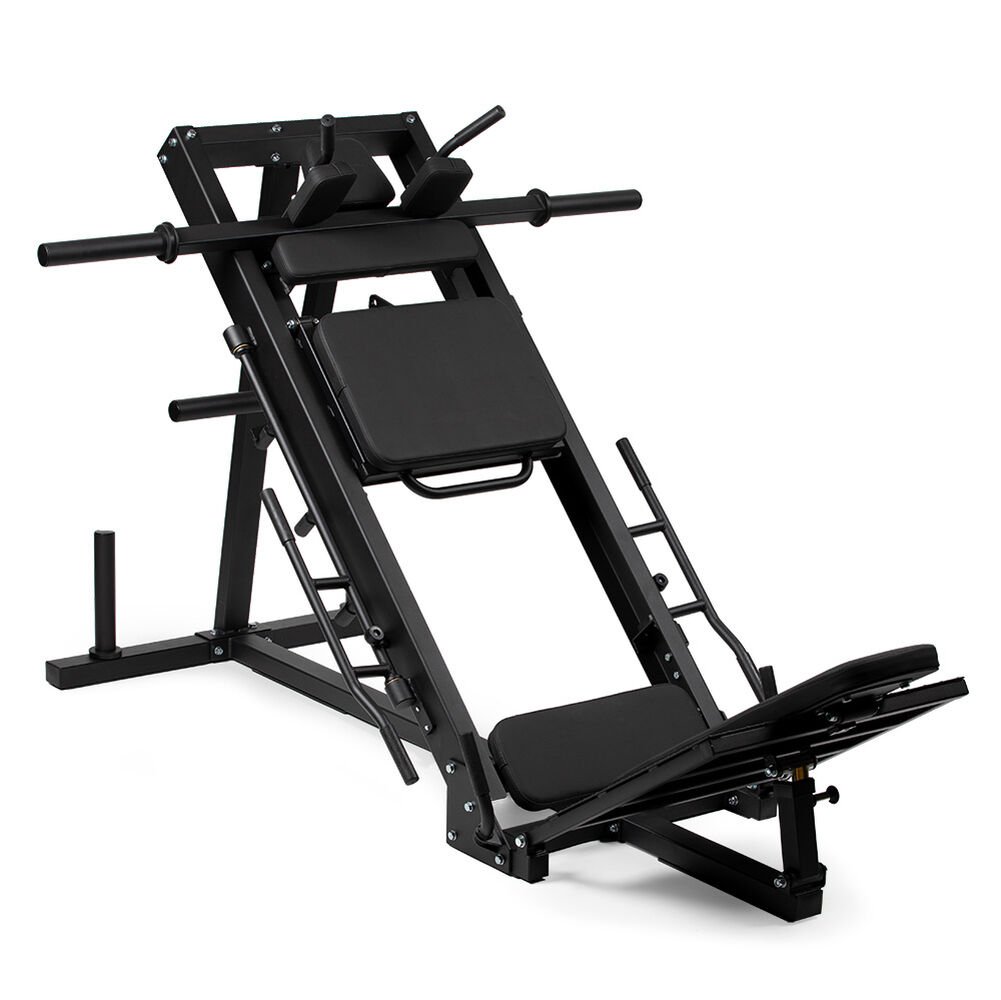Squat jumps are a high-intensity plyometric exercise aiming to increase strength and explosiveness. They involve a squat followed by a vertical jump.
Squat jumps are a dynamic and effective movement that can enhance your lower body strength, endurance, and power. This exercise is prevalent among athletes as it improves performance in sports requiring vertical leaps and explosive starts. By repeatedly squatting and jumping with force, you target the quadriceps, hamstrings, glutes, and calves, along with your core, which helps in maintaining balance and stability during the movement.
Regularly incorporating squat jumps into your workout regimen can also increase your heart rate, making it a beneficial cardiovascular activity. As a bodyweight exercise, it offers the convenience of performing it almost anywhere without the need for specialized equipment.
The Power Of Plyometrics
Plyometric training introduces your muscles to swift, powerful movements. It makes them springy, like a rubber band. Imagine turning your legs into real-life springs. That’s what plyometrics can do.
Exploring Squat Jumps
Squat jumps are a classic plyometric exercise. They combine standard squats with an airborne element. When done regularly, they build leg muscle and improve coordination. Here’s how they work:
- Stand with your feet shoulder-width apart.
- Squat down until your thighs are parallel to the floor.
- Explosively jump up into the air as high as possible.
- Land softly and go back to a squat to complete one rep.
Proper form is key. It keeps you safe through every jump.
Benefits Of Explosive Training
Adding explosive training to your workout comes with many perks. These include:
- Speed and Power: You will run faster and hit harder.
- Athletic Performance: Jump higher, and be more agile.
- Calorie Burn: Flamethrower-style calorie torch in minutes.
- Bone Health: Your bones get stronger as they bear more weight.
Everyone from athletes to weekend warriors can see improvements.
Squat jumps pack a punch for your lower body workout. They sculpt your legs and butt while boosting endurance. Fitness enthusiasts swear by them for a quick, effective burn.

Credit: www.runnersworld.com
Anatomy Of The Squat Jump
Anatomy of the Squat Jump: Squat Jumps are a dynamic exercise. They combine strength and power, providing a full-body workout. Understanding the anatomy of the movement is vital. Knowing which muscles come into play can help you focus your efforts and ensure proper form. Let’s delve into the anatomy of the squat jump.
Key Muscle Groups Targeted
A squat jump targets various muscles throughout the body.
- Quadriceps: Your thighs work hard during squat jumps.
- Glutes: These are the muscles of your rear.
- Hamstrings: These muscles run along the back of your thighs.
- Calves: These help you push off the ground.
- Core: Your abs and back muscles keep you stable.
Biomechanics Of The Movement
Squat jumps involve a complex movement pattern. It’s necessary to discuss how the body moves during this exercise.
- Start Position: Feet shoulder-width apart, knees slightly bent.
- Down Phase: Hips go back, knees bend. Your thighs become parallel to the floor.
- Explosive Jump: You extend your legs forcefully. Your body leaves the ground.
- Landing: You return to start position. Always land softly.
Squat jumps involve coordination and strength. Practice is key.
Integrating Squat Jumps Into Your Workout
Searching for a way to skyrocket your workout routine? Squat jumps are your ticket to explosive strength and cardio fitness. This plyometric powerhouse move can transform your lower body workout, delivering both strength gains and endurance benefits. Here’s how to seamlessly weave squat jumps into your regimen.
Warm-up Essentials
Before diving into squat jumps, a proper warm-up is crucial. This primes your muscles for peak performance and helps prevent injuries.
- Start with light cardio: Jog or cycle for 5-10 minutes.
- Dynamic stretches follow: Leg swings and lunges get you ready.
- Activate your core and glutes with bridges and planks.
Incorporating Variations
Keep workouts exciting by mixing in variations of squat jumps. This challenges your body anew and targets different muscle groups.
- Tuck Jumps: Pull knees towards the chest in mid-air.
- 180 Squat Jumps: Spin mid-jump for a full-body twist.
- Single-Leg Jumps: Isolate and power through one leg at a time.
These changes make your workout fun and effective.
Optimal Reps And Sets
The question often arises: “How many squat jumps should I do?” The answer can vary based on fitness level and goals.
| Experience Level | Reps | Sets | Rest (in seconds) |
|---|---|---|---|
| Beginner | 5-8 | 2-3 | 30-60 |
| Intermediate | 10-12 | 3-4 | 20-40 |
| Advanced | 15-20 | 4-5 | 10-30 |
Track your progress and adjust as you become stronger. Consistency is key to reaping the benefits. With focus and determination, squat jumps elevate your workout to new heights.

Credit: vertimax.com
Boosting Performance And Safety
Squat jumps elevate workouts by building strength, power, and agility. These exercises can push the body to new heights. Yet, to reap these benefits, one must prioritize both performance and safety. Understand the right mechanics and avoid pitfalls to stay in the game and off the bench.
Proper Form And Technique
The key to powerful squat jumps lies in the form. Start with feet shoulder-width apart. Keep your chest up and back straight. As you descend, bend the knees and push your hips back as if sitting in a chair. Arms should swing back for leverage.
Explode up with force. Extend your legs fully. Your body should be straight, like a pencil. Land softly, with knees slightly bent to absorb impact. Repeat smoothly without pauses. Proper technique ensures every jump boosts your performance.
- Squat down, hips back, knees over toes
- Chest up, look forward
- Arms swing back, then thrust up
- Jump high, extend legs
- Land softly, knees bent
- Repeat with rhythm
Avoiding Common Mistakes And Injuries
Avoiding injuries is crucial. Common mistakes can lead to sprains, strains, or worse. Do not let your knees cave in; they should align with your toes. Avoid shallow squats; they short-change benefits and strain knees.
Never land with straight legs. Such landings send shocks through the ankles, knees, and hips. Instead, aim for a soft, controlled landing. Do not rush. Fast, uncontrolled movements increase injury risk. Breathe consistently, and give yourself ample rest between sets.
| Mistake | Impact | Safe Alternative |
|---|---|---|
| Knees caving in | Joint stress | Align knees with toes |
| Shallow squat | Knee strain | Full squat depth |
| Straight leg landing | Shock to joints | Soft, bent-knee landing |
| Rushing | Injury risk | Controlled movement |
Maximizing Results
Seeking the best results from Squat Jumps requires smart strategies. It’s not just doing the move — it’s about doing it right. The right exercises, food, and tracking make a big difference. Let’s dive deeper into each of these key areas.
Complementary Exercises
To make Squat Jumps more effective, mix them with other exercises. This boosts overall lower body strength. Try these:
- Lunges: They help with balance and power.
- Deadlifts: They build your posterior chain.
- Planks: They strengthen your core, which improves stability.
Rotating these exercises creates a well-rounded routine. This supports the muscles you use in Squat Jumps.
Nutrition And Recovery
Right food and rest are vital for max results. After Squat Jumps, consume proteins and carbs. This helps muscle repair. An example meal could be:
| Food Type | Examples | Benefits |
|---|---|---|
| Protein | Chicken, tofu | Rebuilds muscle |
| Carbs | Rice, sweet potatoes | Restores energy |
For recovery, ensure you get quality sleep and consider gentle yoga to stretch out.
Tracking Progress
Monitoring your growth keeps you motivated. Use a simple log to track:
- Repetitions: Number of Squat Jumps done per set.
- Frequency: How often you practice them.
- Recovery: How you feel post-workout.
Review this log weekly. Celebrate the improvements. Adjust your plan to keep growing.

Credit: www.jackedfactory.com
Advance Your Squat Jumps
Ready to take your squat jumps to new heights? Whether you’re an athlete looking to explode past the competition or someone aiming to invigorate their fitness routine, mastering advanced squat jumps can lead to impressive gains. It’s time to elevate power, endurance, and agility with proven strategies that push limits. Let’s dive into the methods that will transform your jumps into powerful moves.
Progressive Overload Principles
To advance, muscles must face greater demands over time. This concept, known as progressive overload, is crucial for continuous improvement. Implementing this into squat jumps means systematically increasing intensity. This can be done in several ways:
- Increase Repetitions: Aim for more jumps in each set.
- Add Weight: Hold weights to intensify the challenge.
- Reduce Rest Times: Shorter breaks between sets boost endurance.
- Vary Tempo: Experiment with the speed of your squat and jump phases.
Advanced Variations And Techniques
Progress doesn’t stop with overload. Introducing advanced techniques can further refine your squat jumps. Explore these dynamic variations:
| Variation | Description | Benefits |
|---|---|---|
| Tuck Jumps | Lift knees to chest at jump’s peak. | Increase core involvement and explosive power. |
| Single-Leg Squat Jumps | Perform a squat jump on one leg. | Improve balance and individual leg strength. |
| Box Jumps | Jump onto a stable platform and back down. | Target different muscle groups and enhance coordination. |
Frequently Asked Questions Of Squat Jumps
What Are Jump Squats Good For?
Jump squats boost leg strength, enhance explosive power, and increase heart rate, aiding in calorie burn and improving cardiovascular fitness. They also help to improve balance and agility.
What Is The Squat Jump?
The squat jump is a plyometric exercise that combines a deep squat with a vertical leap. Performers squat down, then explosively jump up, landing back in a squat position. It’s effective for building lower body strength and improving explosive power.
Are Squat Jumps Hard?
Squat jumps can be challenging due to the explosive strength required. They target multiple muscle groups, boosting cardio intensity and improving power. Proper form and fitness level are key to execution.
Are Squat Jumps Better Than Weighted Squats?
Squat jumps and weighted squats serve different fitness goals. Squat jumps excel in increasing explosiveness and burning calories, while weighted squats are superior for building muscle mass and strength. Neither is inherently better; it depends on your specific fitness objectives.
Conclusion
Ready to elevate your fitness game? Squat jumps are your go-to move! They boost strength, power, and burn serious calories. With consistent practice, your agility and athletic performance will soar. Embrace the challenge, reap the rewards, and leap into a fitter future.
Now, let’s jump into action!


